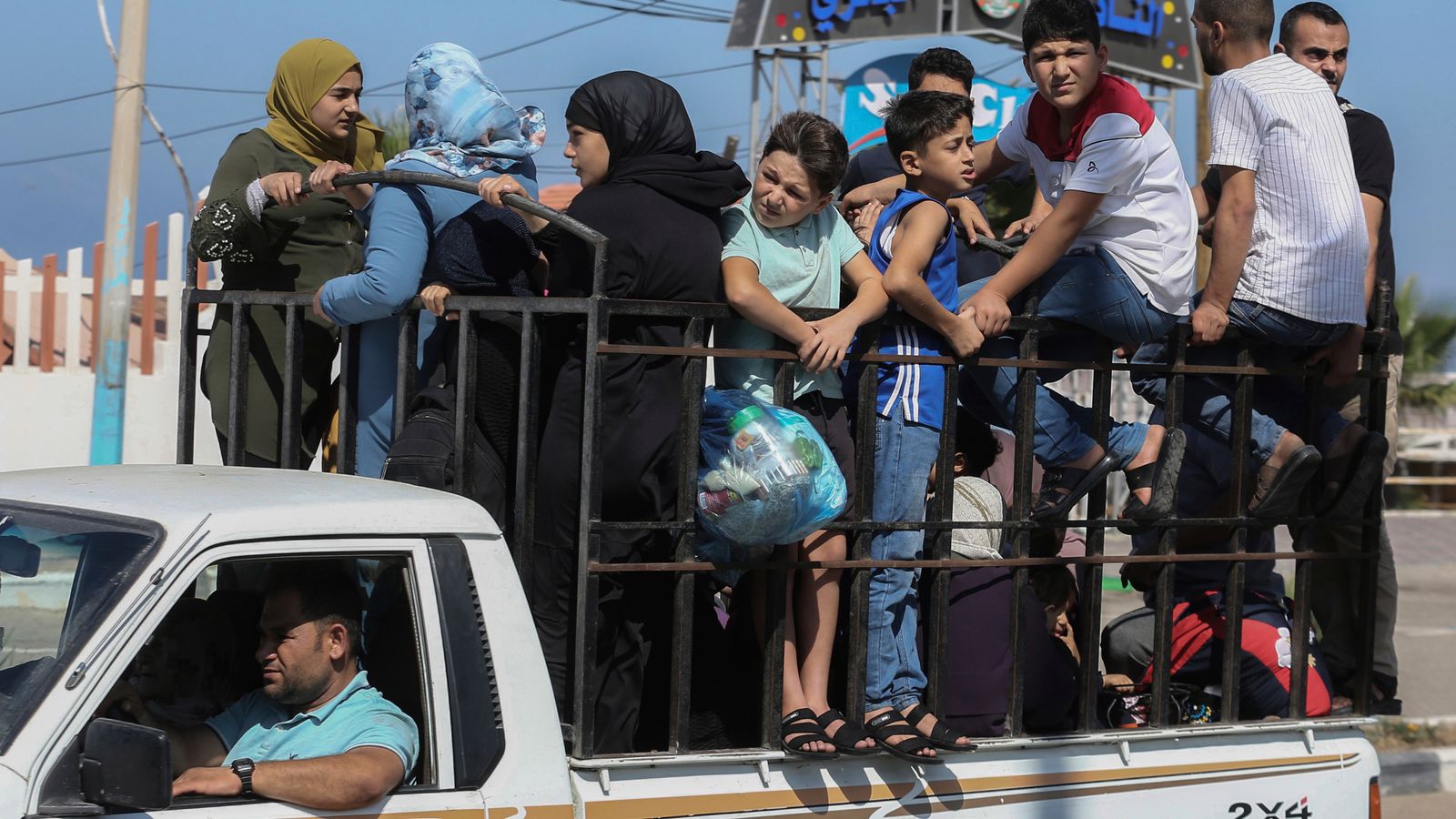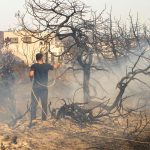Evacuating more than a million people from northern Gaza in less than 24 hours is “impossible” for a number of reasons, aid workers have told Sky News.
The Israeli Defence Force (IDF) has ordered 1.1 million people currently north of the Wadi Gaza bridge to move south before it launches its response to Saturday’s incursion by Hamas.
Both the United Nations and the World Health Organisation have urgently called on Israel to revoke the order, warning it will result in a humanitarian disaster – whether people are able to move or not.
The journey from the northernmost point of the Gaza Strip, the Erez Crossing, to Wadi Gaza is 10.5 miles and would take around four hours on foot in good conditions.
The area being told to evacuate includes Gaza City, 11 hospitals, three UN compounds, and two refugee camps.
Gaza ‘becoming hellhole’; follow war latest
‘One of the most densely populated places on Earth’
With Gaza’s extremely high population density and decimated infrastructure, anyone making the journey would have to navigate airstrikes and areas turned to rubble with little to no food, water or fuel supplies.
Ahmad Bostan, director of communications and marketing at Penny Appeal, which has worked in the Palestinian territories since 2014, says there are several reasons mass evacuation is virtually impossible.
The first is population density, he says, with up to 500 people per square kilometre in Gaza City.
“Gaza is one of the most densely populated places on the face of the Earth,” he tells Sky News.
“It’s very difficult to move around.
“We saw that with COVID – social distancing and the precautions we had here were virtually impossible there.”
Getting in a vehicle poses huge risks
With up to 80% of Gaza’s population relying on humanitarian aid, the vast majority have no access to a vehicle.
And anyone who does risks being killed in an airstrike if they were to use them to evacuate.
“The huge issue with vehicle transport is the number of restrictions people face in Gaza,” Mr Bostan says.
“The infrastructure is at its worst position it has been for a long time. And when someone gets in a vehicle they expose themselves to a huge amount of risk.”
Those able to attempt the journey on foot would likely be doing so having not eaten or drank clean water for days, which in itself poses a health risk, he adds.
Pregnant women, children and chronically ill unable to travel
Of the 1,537 Palestinians who have been killed since Saturday so far, at least 500 were children and more than 270 were women, according to the Palestinian Health Ministry.
Some 6,000 are also wounded in hospitals that are at capacity or fast approaching it. They are also expected to run out of power and medical supplies in the coming days.
Israel says it has lost around 1,300 people in the attacks by Hamas, too.
That’s why a ground offensive on Gaza seems inevitable.
But long-standing conflict in the Gaza area means there are several groups who are incredibly vulnerable, living in abject poverty and unable to travel.
James Denselow, head of conflict and humanitarian advocacy at Save the Children UK, told Sky News that these include more than 50,000 pregnant women, 5,000 of whom are due to give birth in the next month.
“If you’re a child in a neonatal unit in a hospital in a part of Gaza being evacuated, what chance do you have?” he asked.
According to the Physicians for Human Rights Israel, there are currently 1,100 patients on dialysis and 100 premature babies across hospitals in the evacuation area.
The disabled, elderly, orphans and women with children are also among those unable to leave, Mr Bostan adds.
Read more:
Britain’s role in Israel-Palestine conflict’s deep roots
How did the latest war break out?
How to free Hamas’s hostages, according to a negotiator
Please use Chrome browser for a more accessible video player
Be the first to get Breaking News
Install the Sky News app for free
UN ‘safe zones’ now unsafe
Although in ‘normal’ times, people would evacuate to UN schools or compounds, as they are designated safe zones, these have also come under fire in recent days, Mr Bostan adds.
Asked if the hospitals or UN facilities south of Wadi Gaza have extra capacity to welcome evacuees, he replies: “No.”
When a similar order was issued by Israeli forces during the 2014 Gaza war, the southern Rafah crossing into Egypt played a key part in allowing people to escape and for supplies to be moved in.
But with all crossings closed, the situation is “extremely difficult”, Mr Bostan says.






















